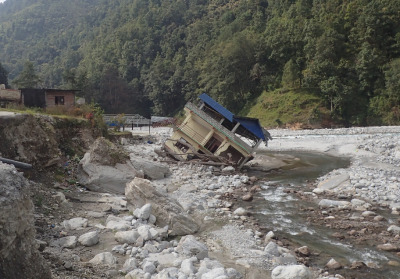Protecting the ‘Water Tower’ of Asia: The Future of the Hindu Kush Himalaya

Summary
Mountain regions are particularly sensitive to climate change – often temperatures are increasing at rates above the global average, leading to rapidly melting glaciers, extreme events such as floods and landslides, and threatening the long term supply of water for municipalities, agriculture, energy and industry. Mountain regions are also important for their biological diversity and sensitivity, where small climate changes can lead to significant impacts on species’ habitats. In light of these challenges, mountainous countries and regions are taking action to adapt their populations to climate change, and to build resilience through technological, social and institutional actions, notably through building partnerships across political borders.
This video is part of a series*, drawing attention to climate adaptation actions that can be taken in mountain regions. Learn about challenges of climate change in the Himalayan mountains, as well as examples of adaptation actions. Featuring Mr. Izhar Ali Hunzai from the Soni Jawari Centre for Public Policy, we hear about the climate change policy and adaptation actions taking place in Pakistan and regionally. The focus is on integrating all sectors into a comprehensive climate adaptation plan, and to optimize the water-energy nexus to “green the vertical deserts”.
*This video was made with the support of Kaosmovies. Check out the rest of the series, which explores climate change challenges and adaptation in the context of East Africa, the Swiss Alps, and the Andes.
Further resources
- Suggested Citation:Adaptation at Altitude (2023). Protecting the Water Tower of Asia: The Future of the Hindu Kush Himalaya. Accessible at: https://vimeo.com/762739911/2684751f01?share=copy
- Resilient Mountain Solutions in the Hindu Kush Himalaya
- Glacial lake outburst floods: A shared risk across the Hindu Kush Himalayas
- Enhancing cooperation to address cascading climate risks in the Hindu Kush Himalaya
- Outlook on climate change adaptation in the Hindu Kush Himalaya
- The Hindu Kush Himalaya Assessment: Mountains, Climate Change, Sustainability and People

Comments
There is no content